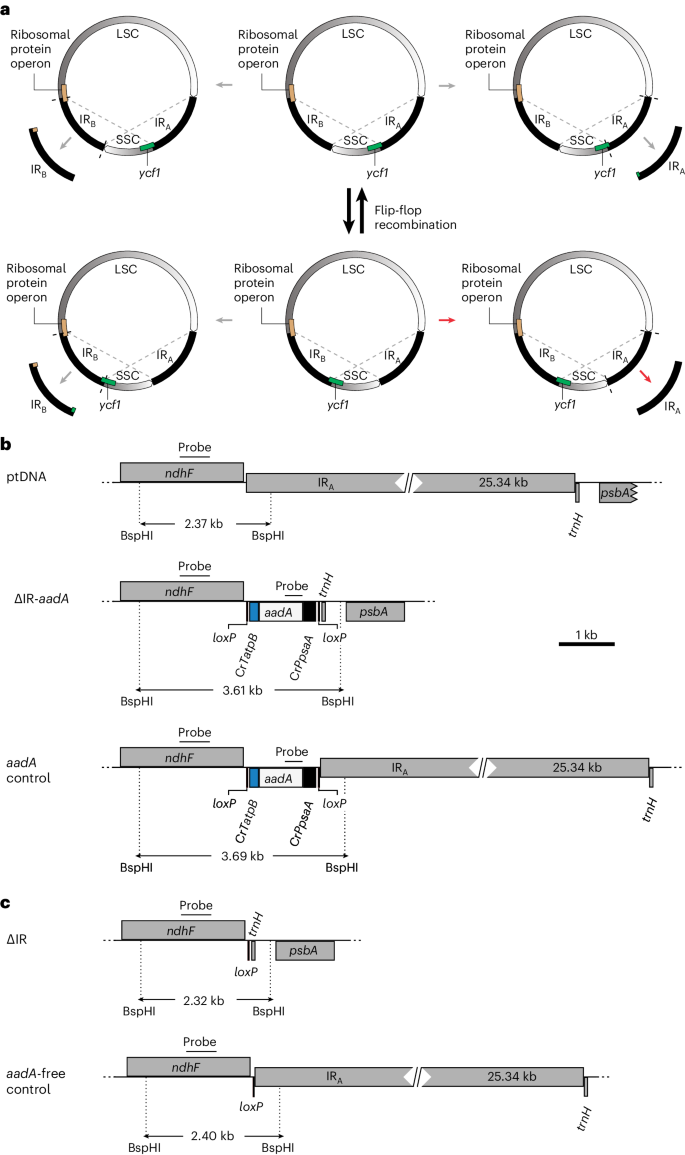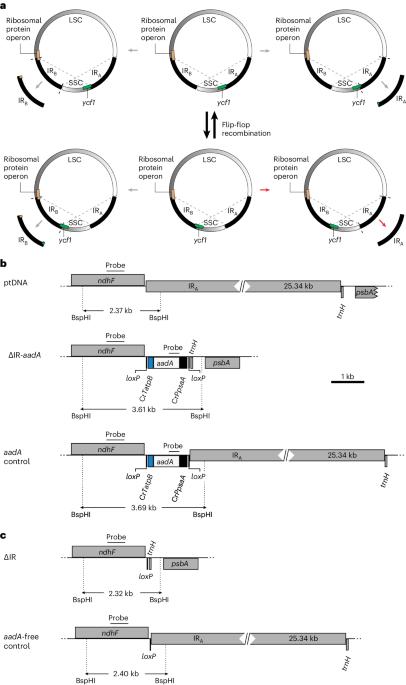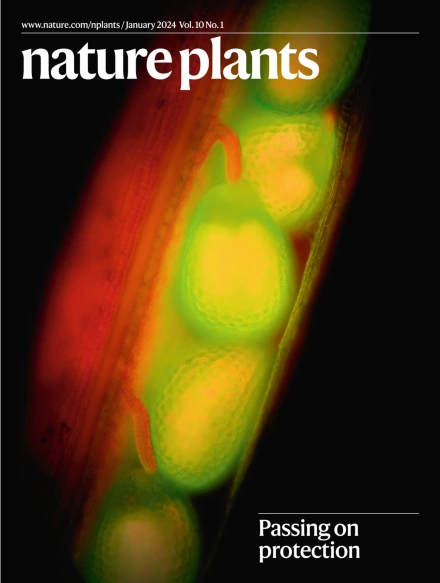从质体基因组中移除大型倒位重复揭示了基因剂量效应,并导致基因组拷贝数增加
IF 15.8
1区 生物学
Q1 PLANT SCIENCES
引用次数: 0
摘要
大多数植物和藻类的叶绿体基因组都包含一个大的倒位重复(IR)区,它将两个单拷贝区分开,并包含核糖体 RNA 操作子。我们通过从烟草质体基因组中移除 25.3 kb IR 的整个拷贝,研究了 IR 区域的功能重要性。利用质体转化和随后的选择性标记基因消除,我们精确地切除了 IR,从而产生了质体基因组大小大大减小的植株。我们发现,缺少 IR 会导致质体核糖体数量轻度减少,这表明核糖体 RNA 操作子的重复存在会带来基因剂量上的好处。此外,缺失 IR 的植株含有更多的质体基因组,这表明基因组拷贝数是通过测量质体 DNA 总含量而不是通过计算基因组来调节的。总之,我们的研究结果(1)证明了IR可以提高质体的翻译能力,(2)揭示了基因组大小与基因组拷贝数之间的关系,(3)提供了简化的质体基因组结构,这将有助于未来合成生物学的应用。本文章由计算机程序翻译,如有差异,请以英文原文为准。


Removal of the large inverted repeat from the plastid genome reveals gene dosage effects and leads to increased genome copy number
The chloroplast genomes of most plants and algae contain a large inverted repeat (IR) region that separates two single-copy regions and harbours the ribosomal RNA operon. We have addressed the functional importance of the IR region by removing an entire copy of the 25.3-kb IR from the tobacco plastid genome. Using plastid transformation and subsequent selectable marker gene elimination, we precisely excised the IR, thus generating plants with a substantially reduced plastid genome size. We show that the lack of the IR results in a mildly reduced plastid ribosome number, suggesting a gene dosage benefit from the duplicated presence of the ribosomal RNA operon. Moreover, the IR deletion plants contain an increased number of plastid genomes, suggesting that genome copy number is regulated by measuring total plastid DNA content rather than by counting genomes. Together, our findings (1) demonstrate that the IR can enhance the translation capacity of the plastid, (2) reveal the relationship between genome size and genome copy number, and (3) provide a simplified plastid genome structure that will facilitate future synthetic biology applications. Removing the large inverted repeat region from the chloroplast genome revealed a gene dosage benefit for the ribosomal RNA operon. The reduced genome size resulted in increased genome copy numbers and offers potential for synthetic biology.
求助全文
通过发布文献求助,成功后即可免费获取论文全文。
去求助
来源期刊

Nature Plants
PLANT SCIENCES-
CiteScore
25.30
自引率
2.20%
发文量
196
期刊介绍:
Nature Plants is an online-only, monthly journal publishing the best research on plants — from their evolution, development, metabolism and environmental interactions to their societal significance.
 求助内容:
求助内容: 应助结果提醒方式:
应助结果提醒方式:


